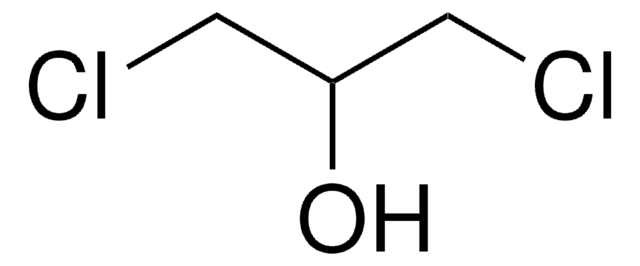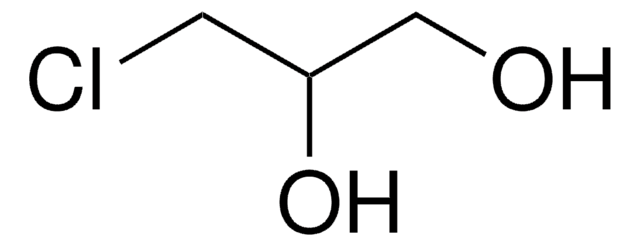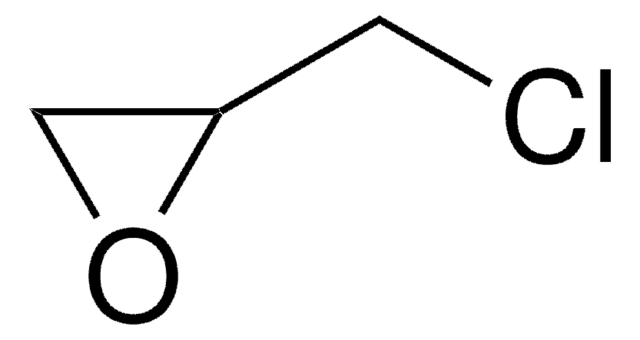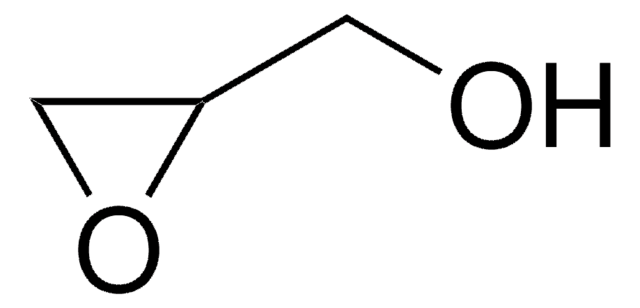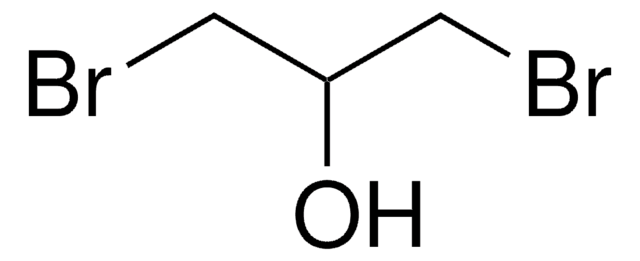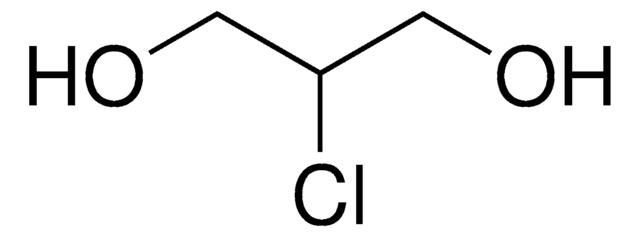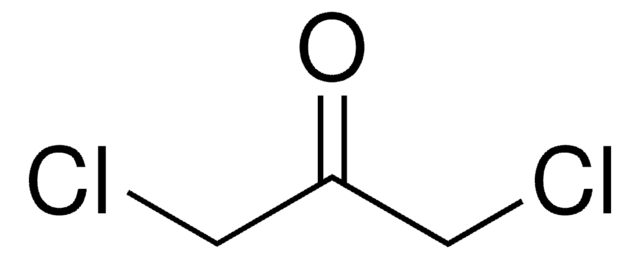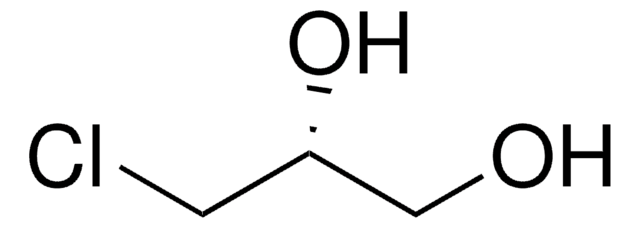Alle Fotos(1)
Wichtige Dokumente
36295
2,3-Dichlor-1-propanol
≥97.0% (GC)
Synonym(e):
Glycerin-α,β-dichlorhydrin
Anmeldenzur Ansicht organisationsspezifischer und vertraglich vereinbarter Preise
Alle Fotos(1)
About This Item
Lineare Formel:
ClCH2CHClCH2OH
CAS-Nummer:
Molekulargewicht:
128.99
Beilstein:
1732060
EG-Nummer:
MDL-Nummer:
UNSPSC-Code:
12352100
PubChem Substanz-ID:
NACRES:
NA.22
Empfohlene Produkte
Qualitätsniveau
Assay
≥97.0% (GC)
Dichte
1.360 g/mL at 20 °C (lit.)
Funktionelle Gruppe
chloro
hydroxyl
SMILES String
OCC(Cl)CCl
InChI
1S/C3H6Cl2O/c4-1-3(5)2-6/h3,6H,1-2H2
InChIKey
ZXCYIJGIGSDJQQ-UHFFFAOYSA-N
Allgemeine Beschreibung
2,3-Dichloro-1-propanol belongs to the group of chloropropanols. Inhibitory effects of 2,3-dichloro-1-propanol on T cell both in vivo and in vitro is reported. Improved enantioselective resolution of (R,S)-2,3-dichloro-1-propanol to (S)-2, 3-dichloro-1-propanol by whole cells of a recombinant Escherichia coli in n-heptane-aqueous biphasic system is reported.
Anwendung
2,3-Dichloro-1-propanol may be employed as carbon and energy supplement for the growth of Pseudomonas putida strain (MC4).
Signalwort
Danger
H-Sätze
Gefahreneinstufungen
Acute Tox. 2 Dermal - Acute Tox. 3 Oral - Eye Irrit. 2
Lagerklassenschlüssel
6.1A - Combustible acute toxic Cat. 1 and 2 / very toxic hazardous materials
WGK
WGK 3
Flammpunkt (°F)
199.4 °F
Flammpunkt (°C)
93 °C
Persönliche Schutzausrüstung
Eyeshields, Faceshields, Gloves, type ABEK (EN14387) respirator filter
Hier finden Sie alle aktuellen Versionen:
Besitzen Sie dieses Produkt bereits?
In der Dokumentenbibliothek finden Sie die Dokumentation zu den Produkten, die Sie kürzlich erworben haben.
Kunden haben sich ebenfalls angesehen
Muhammad Irfan Arif et al.
Applied and environmental microbiology, 78(17), 6128-6136 (2012-07-04)
A Pseudomonas putida strain (MC4) that can utilize 2,3-dichloro-1-propanol (DCP) and several aliphatic haloacids and haloalcohols as sole carbon and energy source for growth was isolated from contaminated soil. Degradation of DCP was found to start with oxidation and concomitant
K Fujishiro et al.
Fukuoka igaku zasshi = Hukuoka acta medica, 85(8), 247-250 (1994-08-01)
The toxicity of dichloropropanols (DCPs) was investigated by hematological and blood chemical examination. Solutions of two isomers of DCPs, 1,3-dichloro-2-propanol (DC2P) and 2,3-dichloro-1-propanol (DC1P) were dissolved in saline at a concentration of 100 mg/ml and 0.1 ml of each was
C Aguilar et al.
Journal of chromatography. A, 867(1-2), 207-218 (2000-02-12)
On-line combination of equilibrium sorptive enrichment and gas chromatography is used for the analysis of a group of pollutants varying widely in polarity and volatility in aqueous samples at trace levels. For the ESE process open-tubular traps were used. The
A J Effendi et al.
Applied and environmental microbiology, 66(7), 2882-2887 (2000-07-06)
2,3-Dichloro-1-propanol is more chemically stable than its isomer, 1, 3-dichloro-2-propanol, and is therefore more difficult to degrade. The isolation of bacteria capable of complete mineralization of 2, 3-dichloro-1-propanol was successful only from enrichments at high pH. The bacteria thus isolated
Jing Lu et al.
International immunopharmacology, 17(2), 321-328 (2013-07-16)
2,3-Dichloro-1-propanol (2,3-DCP) is a member of a group of chemicals known as chloropropanols. Currently, immunotoxicity of 2,3-DCP has not been reported. In the present study, we studied its inhibitory effects on T cell both in vivo and in vitro. The
Unser Team von Wissenschaftlern verfügt über Erfahrung in allen Forschungsbereichen einschließlich Life Science, Materialwissenschaften, chemischer Synthese, Chromatographie, Analytik und vielen mehr..
Setzen Sie sich mit dem technischen Dienst in Verbindung.